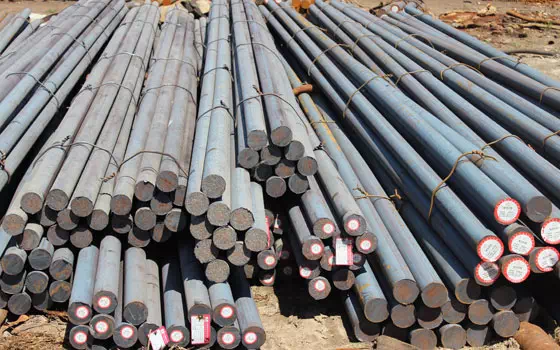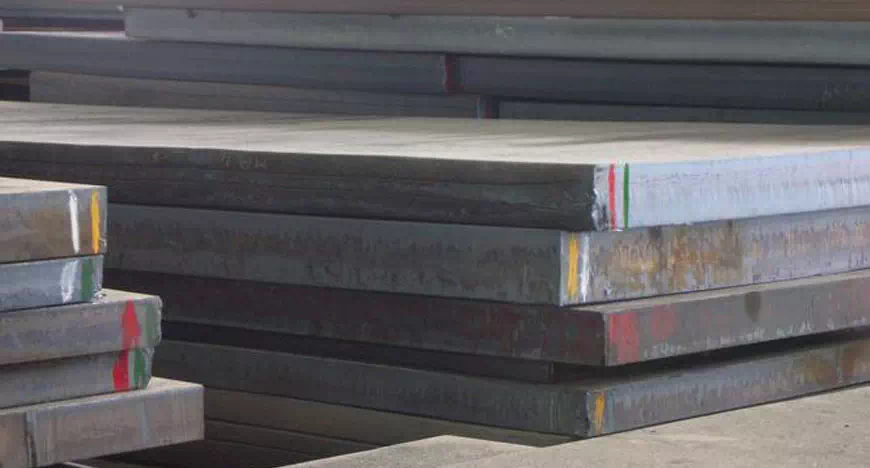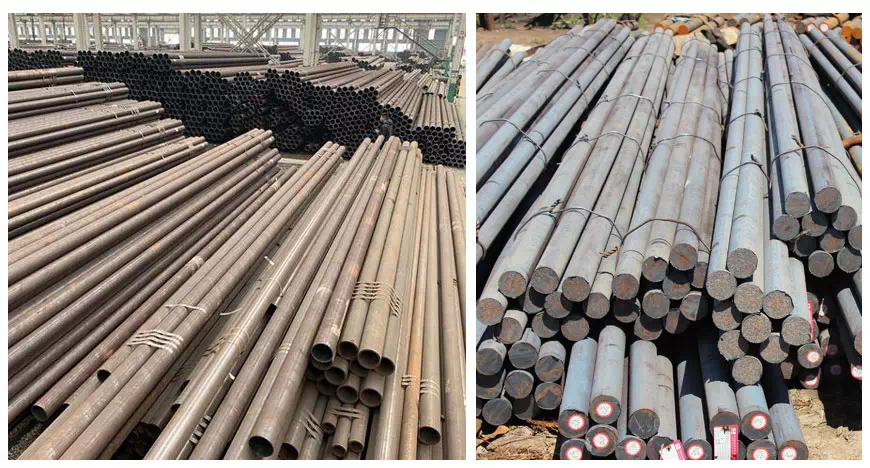Welcome to Zhishang Steel Co., Ltd.
TEL: (Gavin) +86-15665898999 | Email : info@zhishangsteel.com

First. the division of carbon steel strength grade?
1. low carbon steel, also known as mild steel, its carbon content is between 0.10% and 0.30%. Because low carbon steel is easy to accept a variety of processing such as forging, welding and cutting, it is often used in the manufacture of chains, rivets, bolts, shafts and so on.
2. medium carbon steel, its carbon content is between 0.25% and 0.60%. There are many product types of medium carbon steel, including killed steel, semi-killed steel, boiling steel, etc. In addition to carbon, medium carbon steel may also contain a small amount of manganese (0.70% to 1.20%). According to product quality, medium carbon steel can be divided into ordinary carbon structural steel and high-quality carbon structural steel. Medium carbon steel has good hot working and cutting properties, but poor weldability. Compared with low carbon steel, medium carbon steel has higher strength and hardness, but its plasticity and toughness are lower. Medium carbon steel can be used directly with hot-rolled or cold-drawn materials, and can also be used after heat treatment. The medium carbon steel after quenching and tempering has excellent comprehensive mechanical properties.
3. high carbon steel is often called tool steel, its carbon content is between 0.60% and 1.70%. High carbon steel can be hardened and tempered. For example, hammers, crowbars, etc. are made of steel with a carbon content of 0.75%, while cutting tools such as drills, taps, reamers, etc. are made of steel with a carbon content of 0.90% to 1.00%.

Second. carbon steel shear strength comparison?
Mild steel has relatively low shear strength. For example, the shear strength of No. 45 high-quality carbon structural steel is half of its tensile strength. The σb of No. 45 steel is 600MPa and the σs is 355MPa, so its allowable shear strength should be 178MPa. And 40Cr is an alloy tempered steel, its shear strength is higher, the allowable shear strength should be ≥400MPa.
Third. carbon steel strength ranking?
The strength of carbon steel is arranged from low to high, the smaller the serial number, the higher the strength and the higher the carbon content. For example, number 10, 20, 45, etc.
Fourth. the difference in the strength of aluminum plate and iron plate?
The strength of the iron plate is 7.85, while the strength of the aluminum plate is 2.7. Because the density of the two is different, so in the same area, their weight is different.
1. the strength of aluminum plate is smaller than iron plate, but its electrical and thermal conductivity are stronger than iron plate, and corrosion resistance is also stronger than iron plate;
2. aluminum plate has good plasticity, that is, ductility, so it is easy to make a variety of profiles;
3. the aluminum plate has a silver-white luster, and the iron plate is black. Therefore, aluminum plate is often used as anticorrosive coating.
Fifth. why water supply intensity is less than infiltration intensity will occur infiltration?
1. The influence of soil characteristics: this mainly depends on the water permeability and early water content of the soil. If the water permeability of the soil is good and the water content in the early stage is small, then the infiltration capacity will be greater. The permeability of soil is related to the texture of soil, the number and size of pores.
2. Influence of precipitation characteristics: precipitation characteristics include precipitation intensity, duration and spatial and temporal distribution of precipitation. Precipitation intensity directly affects soil infiltration intensity.
3. The influence of vegetation and topographic conditions in the basin: in areas usually covered by vegetation, due to the water-holding effect of vegetation, the infiltration time will be increased, thereby reducing the infiltration rate.
4. Influence of human activities: Human activities can either increase or inhibit infiltration. For example, afforestation and water storage projects can increase infiltration.
Six. the strength of brass and carbon steel comparison
Brass is made of copper zinc alloy smelting, its hardness and strength will decrease with the increase of copper content, on the contrary, if the lower the copper content, the higher the zinc alloy content, then the hardness and strength will be higher. In contrast, carbon steel is divided into low carbon steel, medium carbon steel and high carbon steel. The carbon content of low carbon steel is less than 0.2%, so its hardness and strength are low; The carbon content of medium carbon steel is between ≥ 0.2% and < 0.6%, so its hardness and strength are higher than low carbon steel, but lower than high carbon steel. In general, brass is stronger than carbon steel.

Seven. the strength of ordinary carbon steel?
The tensile strength of ordinary carbon steel is generally 235MPa. Compared with other types of steel, carbon steel has the longest history of use, the lowest cost, a wide range of performance, and the largest amount. It is suitable for water, steam, air, hydrogen, ammonia, nitrogen and petroleum products with nominal pressure PN≤32.0MPa and temperature -30-425℃. Commonly used grades are WC1, WCB, ZG25 and high-quality steel 20, 25, 30 and low alloy structural steel 16Mn. In the annealed or hot rolled state, with the increase of carbon content, the strength and hardness of the steel will increase, but its plasticity and impact toughness will decrease, and the weldability and cold bending will become worse. Therefore, when steel is used in engineering structures, the carbon content is usually limited. In addition, residual elements and impurity elements in carbon steel (such as manganese, silicon, nickel, phosphorus, sulfur, oxygen, nitrogen, etc.) will also affect the performance of carbon steel. These influences sometimes reinforce each other and sometimes cancel each other out.
Eight. the yield strength of low carbon steel?
The yield strength refers to the yield limit of the metal material when the yield phenomenon occurs, that is, the stress that resists the trace plastic deformation. For metal materials without obvious yield phenomenon, the stress value of 0.2% residual deformation is specified as the yield limit, which is called the conditional yield limit or yield strength. If the external force is greater than this limit, the part will be permanently deformed and cannot be restored; If the external force is less than this limit, the part can be restored to its original state. For example, the yield limit of mild steel is 207MPa. When the external force exceeds this limit, the parts will be permanently deformed; When the external force is less than this limit, the part can be restored to its original state.

Zhishang Steel has always been a pioneer in custom steel and special supplies, and has been recognized for its efforts in enhancing work efficiency and product quality. In addition to ISO9001:2015 certification, we also adhere to strict quality policies and proprietary procedures. If you have any questions, please contact us to provide the best type of product solution for your pre-painted, coil coating metal process, we will closely support after-sales service to ensure that your subsequent problems can be solved in a timely manner, if you have any questions, please send email to info@zhishangsteel.com, we look forward to serving you.

Zhishang Steel, specializing in domestic steel products trade, warehousing, processing and other services. The team has four service teams: Shandong Zhishang Steel Co., LTD., Shandong Zhiyiheng Trading Co., LTD., Tai 'an Zhishang Economic and Trade Co., LTD., Shandong Zhishang Steel Structure Co., LTD. Mainly engaged in steel coil, coated, stee···